Home Renovation: A Comprehensive Guide to Eco-Friendly and Sustainable Upgrades for Homeowners
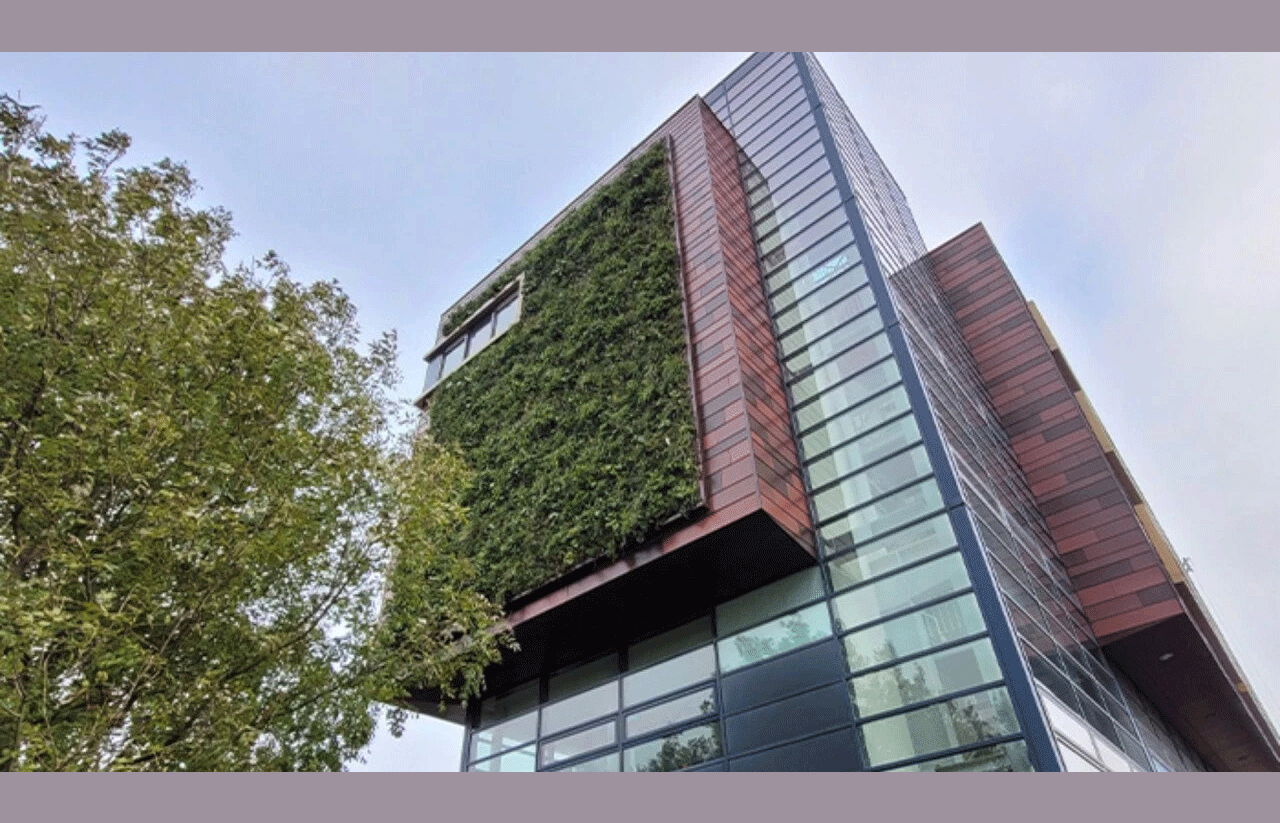
In a world increasingly aware of the urgent need to address global warming, adopting environmentally friendly practices in our homes is more important than ever. As homeowners, our sustainable choices during renovations can significantly reduce our carbon footprint and help preserve the planet for future generations.
If you’re seeking sustainable renovation ideas and want to enhance your home while making a positive impact, consider these eco-friendly improvements and mindful renovation tips. Embracing sustainability not only elevates the comfort and style of your living space but also fosters small changes that can lead to substantial benefits for both your home and the environment.

What is Sustainable Home Renovation?
Sustainable home renovation involves employing design practices and materials that minimize environmental impact while enhancing the functionality and aesthetics of your living space. This approach includes various strategies, such as energy-efficient upgrades and the use of eco-friendly materials and construction techniques.
By integrating eco-renovation principles into your home improvement projects, you can amplify their environmental benefits. Eco-renovation emphasizes reducing the ecological footprint of renovations through the use of renewable resources, implementing energy-saving technologies, and incorporating recycled or reclaimed materials whenever possible.

From installing solar panels and energy-efficient appliances to selecting low-VOC paints and eco-friendly insulation, every choice you make during the renovation process contributes to a more environmentally responsible home.
By embracing green improvements and eco-friendly practices, homeowners not only enhance the value and comfort of their properties but also actively participate in tackling climate change and fostering a more sustainable future.

How Can I Sustainably Renovate My House?
Beginning your sustainable renovation journey requires making environmentally conscious choices at every step. Here are some key eco-friendly ideas to consider for your home:

Insulation
Effective insulation is crucial for maintaining a comfortable indoor environment and reducing energy consumption. By insulating your floors, roof, loft, walls, pipes, radiators, and hot water tanks, you can significantly minimize heat loss. This not only enhances energy efficiency throughout your home but also helps lower your energy bills.

Roofs and Lofts
Insulating your roof and loft is essential for retaining heat and minimizing energy loss. For pitched roofs, you can install insulation between and over the rafters or use insulation boards beneath the roof covering. In the case of flat roofs, insulation can be placed above the ceiling or integrated within the roof structure.
Sustainable options include using recycled materials such as cellulose insulation, made from recycled paper, or sheep’s wool insulation. These materials offer excellent thermal performance while significantly reducing your environmental impact.

Cavity Walls
Cavity wall insulation involves filling the space between the inner and outer layers of external walls with insulating material. This helps prevent heat loss and enhances energy efficiency. Sustainable options include materials such as sheep’s wool, mineral wool (which can be made from recycled glass or rock), and polyisocyanurate boards. These eco-friendly choices offer effective insulation while helping to lower the carbon footprint of your home.
Solid Walls
Insulating solid walls is crucial for enhancing thermal efficiency, particularly in older homes with solid brick or stone walls, though it can be more costly than cavity wall insulation. Internal insulation involves attaching insulation boards or studs to the interior walls and filling the gaps with insulation material. Natural options like wood fiber boards or sustainably sourced polyisocyanurate boards provide excellent thermal performance along with environmental benefits.
Heating Systems
Insulating pipes, radiators, and hot water tanks is vital for maximizing energy efficiency and minimizing heat loss throughout your home’s heating system. Pipe insulation sleeves or lagging can be added to hot-water pipes to reduce heat loss during distribution.
Similarly, installing radiator insulation panels or reflective foil behind radiators can enhance heat retention and improve the distribution of warmth within rooms.
Additionally, specialized jackets or wraps can be installed around hot water tanks to minimize standby heat loss and maintain water temperature.
Floors
If you live above an unheated space, such as a garage, or on the ground floor, like a bungalow or flat, insulating your floors can enhance thermal comfort and energy efficiency. Depending on your home's construction, insulation can be installed either above or below the floor surface.
For suspended wooden floors, consider placing insulation between the floor joists or beneath the floorboards. Materials like mineral wool, sheep’s wool, or rigid foam boards can effectively minimize heat transfer.
For solid concrete or screed floors on the ground level, insulating the floor surface can significantly improve thermal performance. Adding a layer of wool floor insulation, insulation boards, or underfloor heating mats beneath the flooring material can provide effective insulation and enhance overall comfort.
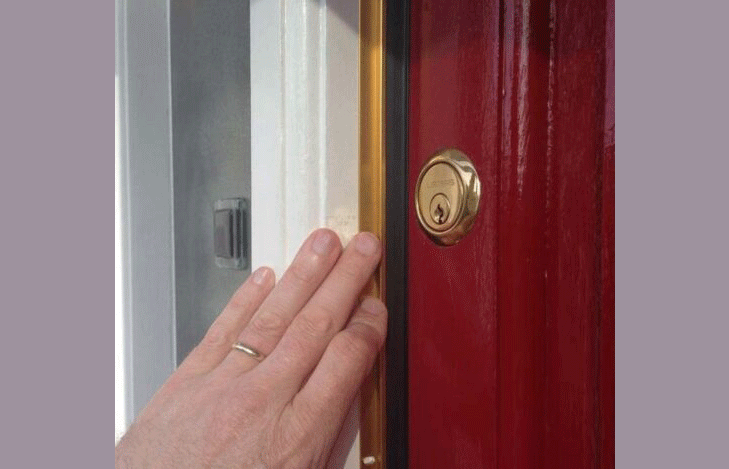
Draught-Proofing
Seal gaps and cracks around your floors, windows, doors, and other openings with draught excluders, weather stripping, or caulking to prevent drafts and improve thermal efficiency. Draught-proofing is a simple yet effective solution that helps maintain a consistent indoor temperature, reduces energy bills by minimizing the need for heating and cooling, and ensures an airtight building.
By creating an airtight seal, draught-proofing prevents warm air from escaping during the winter and keeps cool air inside during the summer, thereby reducing the workload on your heating and cooling systems.
Consider using a chimney balloon to block off unused chimneys, further preventing heat loss and drafts while enhancing the effectiveness of your draught-proofing efforts.

Windows
Upgrading from single-glazed to double or triple-glazed windows can greatly improve insulation and thermal performance. These windows consist of multiple layers of glass with insulating gas-filled spaces in between, effectively reducing heat transfer and boosting energy efficiency.
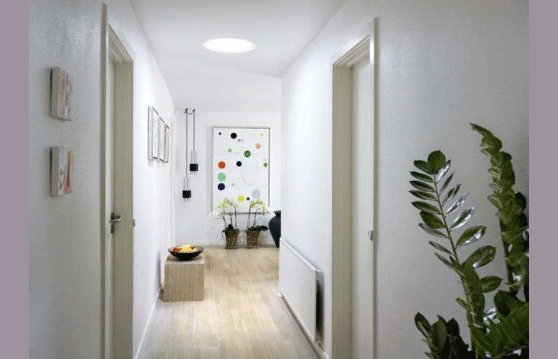
Additionally, choosing windows with low-emissivity (low-E) coatings can further enhance their thermal properties, helping to maintain a comfortable home throughout the year.
Selecting window frames that conduct less heat or cold, such as wood or uPVC with thermal breaks, can also improve insulation and overall energy efficiency. Remember, a lower U-value indicates better energy efficiency.
For dark and dimly lit rooms that lack natural light, sun tunnels provide an excellent solution. These innovative devices capture sunlight from the roof and direct it into interior spaces, enhancing your home’s aesthetics while reducing the need for artificial lighting during the day. This minimizes electricity usage and lowers energy bills.
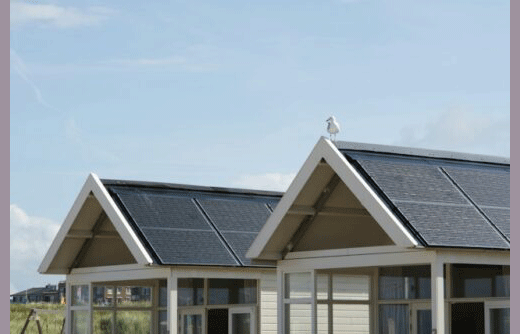
Solar Panels
As a sustainable solution for your home, solar panels harness renewable energy to provide clean power. Solar photovoltaic (PV) panels convert sunlight into electricity, reducing reliance on fossil fuels and lowering carbon emissions.
With advancements in technology and decreasing costs, solar energy has become an increasingly viable option for homeowners aiming to minimize their environmental impact and energy bills. Plus, since sunlight is free, investing in solar panels not only leads to long-term savings on energy costs but also offers a reliable and eco-friendly source of power for your home.
Plus, solar panels don’t require direct sunlight to operate, so they can still generate electricity on cloudy days when installed on a wall or roof that faces within 90° of south.
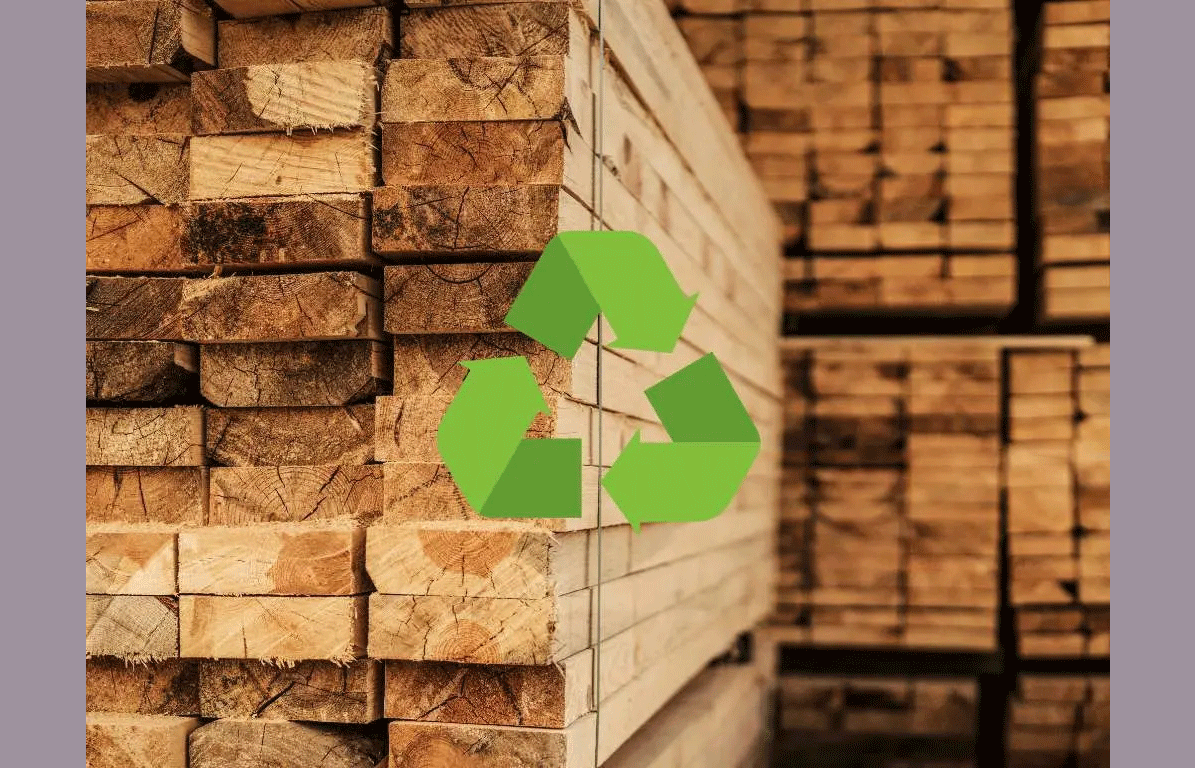
Sustainable Materials
Selecting sustainable materials for your construction projects is a thoughtful choice that contributes to a healthier living environment and promotes environmental responsibility. Let’s delve into some eco-friendly options:
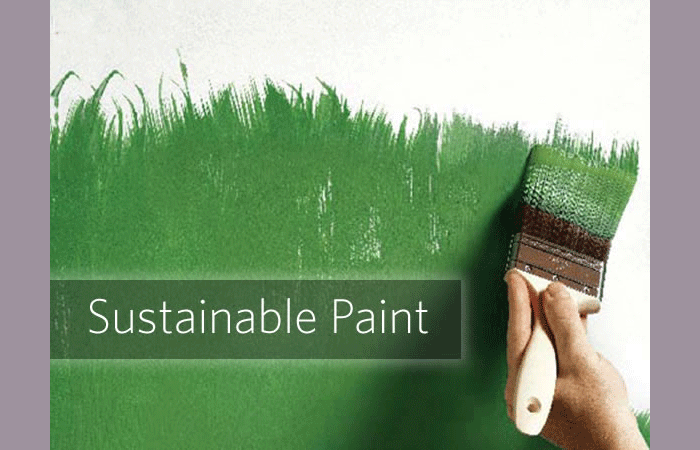
Low-VOC Paints
Volatile organic compounds (VOCs) are harmful chemicals found in many traditional paints that can off-gas into the air, contributing to indoor air pollution and potential health issues. Choosing low-VOC paints reduces exposure to these toxins, improving indoor air quality and creating a healthier living space for you and your family.

FSC-Certified or Recycled Timber
The Forest Stewardship Council (FSC) certification ensures that timber is sourced from responsibly managed forests, promoting sustainable forestry practices and biodiversity conservation.
Alternatively, using recycled timber helps reduce the demand for virgin wood and minimizes deforestation, making it an eco-friendly choice for construction projects.
Hempcrete
Hempcrete is a bio-composite material made from hemp fibers and lime, providing excellent thermal insulation and carbon sequestration benefits.

Bamboo
Bamboo is a rapidly renewable resource that can be utilized for flooring, decking, and structural elements.
Sustainably Harvested Cork
Sustainably harvested cork is a renewable and biodegradable material often used for flooring, wall coverings, and insulation.
Reclaimed Natural Stone
Reclaimed natural stone provides a unique and eco-friendly option for building facades, flooring, and landscaping. This approach reduces the need for new quarrying and minimizes waste.
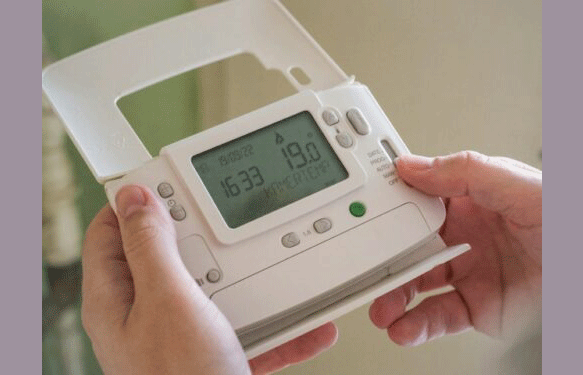
Heating Efficiency
Enhancing the efficiency of your heating system can be achieved by upgrading your thermostat and controls, installing heat pumps, or incorporating underfloor heating. These energy-efficient solutions help reduce energy consumption, lower heating costs, and decrease carbon emissions, all while improving comfort and convenience in your home.
Thermostat and Controls
Upgrading your thermostat and controls is a simple yet highly effective way to enhance the efficiency of your heating system and minimize energy consumption. Modern thermostats offer advanced features that allow for precise control over your heating and cooling settings, leading to optimized comfort and energy savings.
These devices allow you to set specific temperature schedules based on your daily routine, automatically adjusting the temperature to suit your needs. You can even control and monitor them remotely through a smartphone app when connected to smart home automation systems and Wi-Fi networks. This means you can turn off your heating at the touch of a button, even if you’re away on holiday and forgot to switch it off.
Heat Pumps
Heat pumps operate more efficiently than traditional heating systems by transferring heat from one area to another using a small amount of electricity. They draw heat from the outdoor air or ground to warm your home during colder months and reverse the process in warmer months, providing both heating and cooling capabilities.
Several types of heat pumps are available, including air-source, ground-source (geothermal), and water-source heat pumps. Air-source heat pumps extract heat from the outdoor air, while ground-source heat pumps draw heat from the ground or water sources such as ponds or wells. Ground-source heat pumps typically offer higher efficiency and more consistent performance but may require more space and a larger upfront investment for installation.

Underfloor Heating
Underfloor heating systems provide a modern and eco-friendly alternative to traditional radiators, delivering energy-efficient and comfortable heating throughout your home. These systems consist of a network of pipes or electric heating elements installed beneath the floor surface, distributing heat evenly across the room from the ground up.
Unlike traditional radiators that heat the surrounding air, underfloor heating radiates warmth upward from the floor, resulting in more uniform heating and minimizing heat loss, with fewer cold spots and drafts. This system also eliminates the need for bulky radiators, freeing up valuable wall space and allowing for greater flexibility in your interior design.

Green Roof and Eco-Friendly Garden
Transform your garden into a green space by installing a green roof system. Green roofs provide additional insulation to enhance energy efficiency, protect your roof membrane from the elements, and reduce stormwater runoff. They also create habitats for wildlife and improve air quality.
Additionally, consider creating an eco-friendly garden with native plants, wildflower beds, and pollinator-friendly species like lavender, geraniums, and sunflowers. This supports local ecosystems and promotes biodiversity.

By fostering local wildlife, you can lessen your environmental impact. Contributing to biodiversity can also involve installing bird feeders, birdhouses, and bee hotels, which provide essential habitats and food sources for native species. Encouraging pollinators such as bees and butterflies helps support ecosystem health and promotes the reproduction of flowering plants.
Furthermore, establishing a sustainable garden can help mitigate urban heat island effects by providing shade and cooling the surrounding area. Additionally, rainwater harvesting techniques—such as installing water butts or using permeable paving—can conserve water and reduce pressure on municipal supplies.
Implementing composting practices further minimizes waste and enriches the soil, promoting healthy plant growth and enhancing ecosystem resilience. Happy planting!

Water-Saving Devices
Install water-saving devices like low-flow taps, showerheads, and toilets to conserve water and reduce overall consumption. Additionally, harvesting rainwater for irrigation and implementing greywater recycling systems can further decrease your water usage and minimize your environmental impact.
How to Be More Environmentally Friendly at Home
Making small changes in your daily habits can significantly reduce your environmental footprint and promote sustainability. Here are some eco-friendly practices you can adopt at home:

Switch to LED Light Bulbs
Replace traditional incandescent bulbs with energy-efficient LED bulbs. LED bulbs use less energy and have a longer lifespan, helping to lower your electricity bills and minimize your environmental impact.

Conserve Water
Simple actions, like turning off the tap while brushing your teeth or shaving, can help conserve water. Installing low-flow taps and showerheads will further reduce your water usage. Additionally, don’t forget to fix any leaky taps to prevent unnecessary water wastage.

Reduce Energy Waste
Switch off lights, appliances, and electronic devices when they’re not in use to avoid unnecessary power consumption. (Think of the polar bears!) While it might be tempting to leave your TV on standby, make a point to get up and turn it off completely.

Practice Recycling
We’re sure this is already on your list, but be sure to separate your recyclable materials—such as paper, cardboard, glass, plastic, and aluminum cans—properly. By participating in recycling efforts, you can divert waste from landfills, conserve resources, and contribute to a cleaner, more sustainable environment.

Minimize Single-Use Plastics
Whenever possible, choose reusable alternatives to single-use plastics. Use reusable shopping bags, water bottles, coffee cups, and food containers to reduce plastic waste and minimize environmental pollution. It’s time to invest in that reusable water bottle you’ve been considering!

Support Sustainable Transport
Opt for eco-friendly transportation methods such as walking, cycling, car-sharing, or using public transport whenever possible. If your budget allows, consider investing in electric or hybrid vehicles to help reduce carbon emissions.

Grow Your Own Food
Why not start a vegetable garden or grow herbs indoors? This can supplement your diet with fresh, locally grown produce. Growing your own food decreases reliance on industrial agriculture, minimizes food miles to virtually zero, and promotes self-sufficiency. Plus, if there’s ever a zombie apocalypse, you’ll be well-prepared!

Conserve Resources
Choose durable and reusable products instead of disposable alternatives. Whenever possible, repair and maintain household items instead of replacing them, and consider donating or recycling things you no longer need.
Skip fast fashion; charity shops are a great place to find unique and affordable clothing while reducing waste and supporting charitable causes. It’s a win-win!

